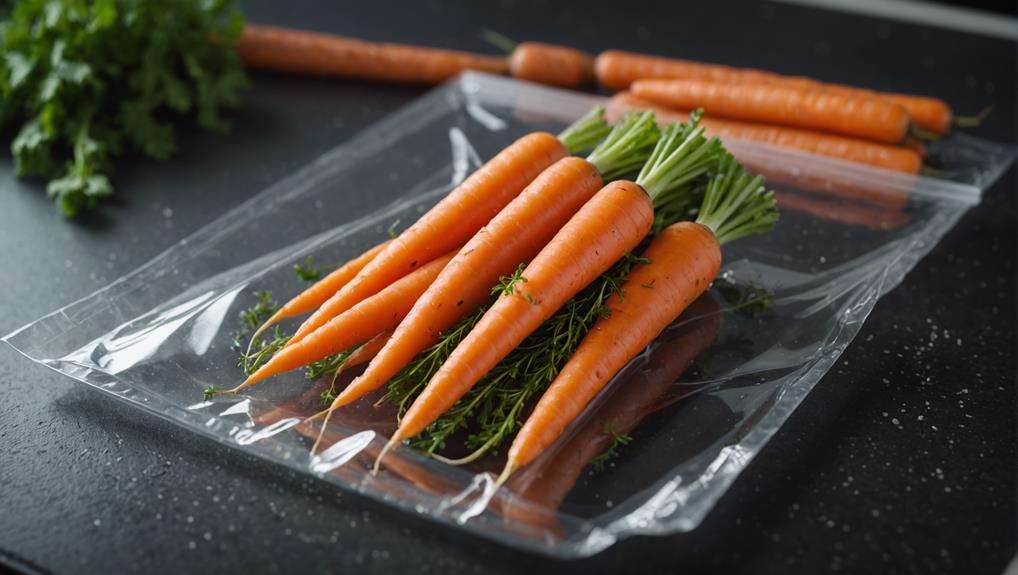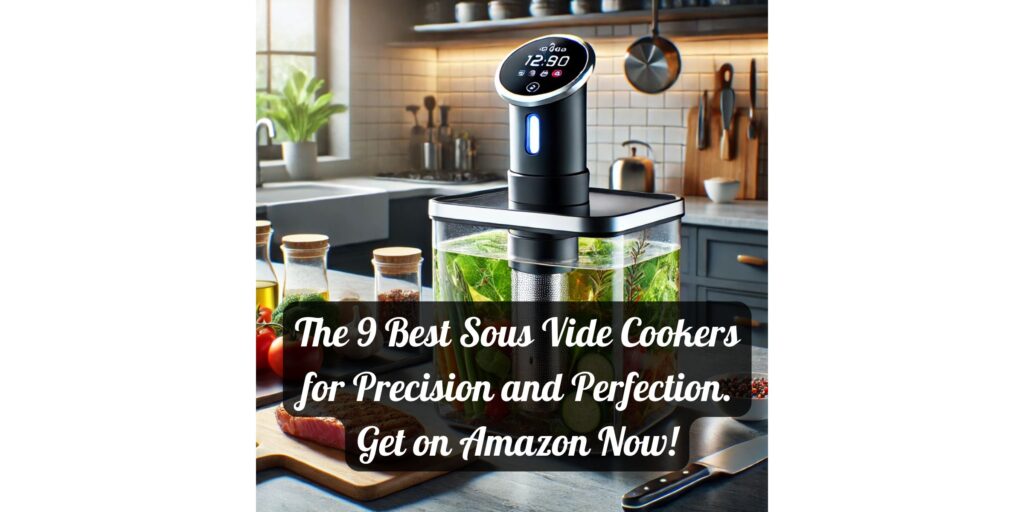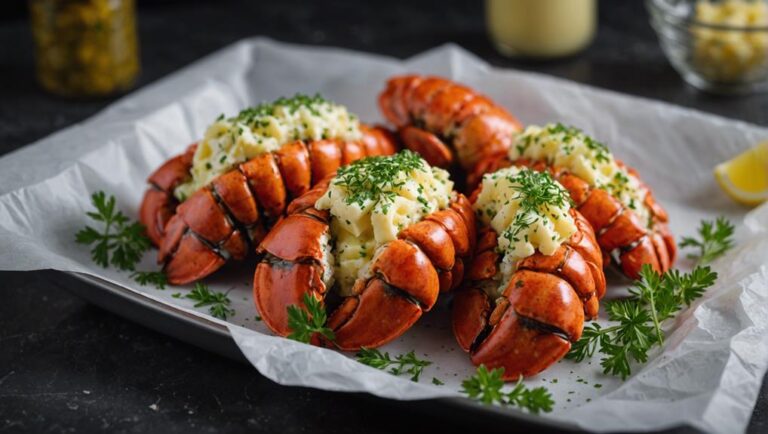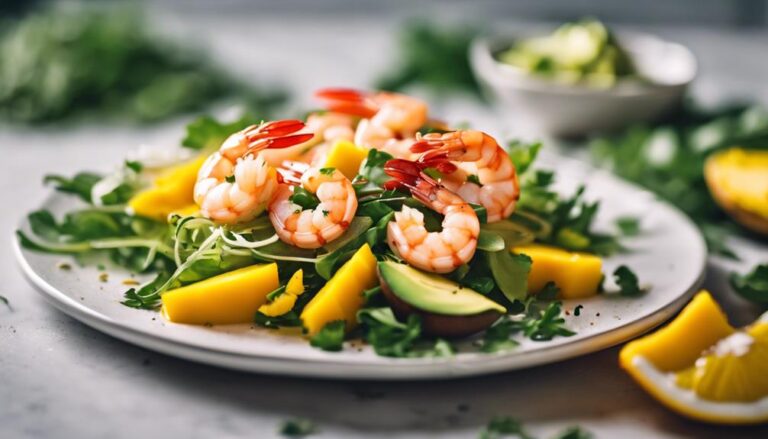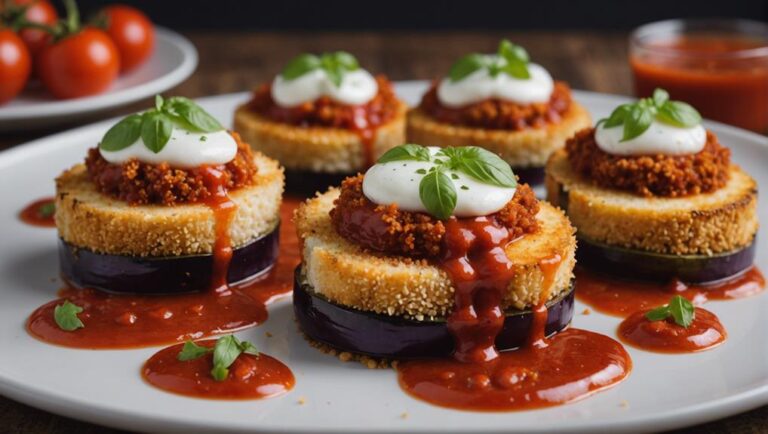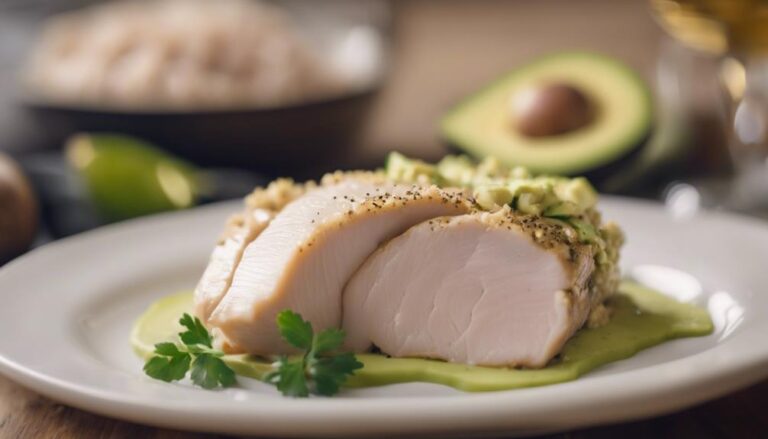Sous Vide Spiced Carrot Salad
Enhance the natural sweetness of carrots with a Sous Vide Spiced Carrot Salad cooked at 185°F for 1 hour. This method retains flavors while infusing spices, leaving carrots tender yet firm. Experiment with cumin, paprika, or Sichuan peppercorns for warm, smoky, or numbing sensations. Vacuum sealing guarantees precise heat distribution, safeguarding flavors and creating an airtight environment. Elevate your culinary experience and explore the sophisticated fusion of flavors in this customizable and visually appealing dish. Immerse yourself in the gourmet world of sous vide spiced carrot salads for a tantalizing culinary journey.
What You Will Learn Here
- Sous vide cooking at 185°F for 1 hour retains carrot's natural flavors.
- Spice infusion enhances taste without overpowering.
- Carrots are cooked to a tender yet firm texture.
- Customizable salad recipe for a visually appealing dish.
- Consistent temperature ensures even spice absorption.
Carrot's Origin Story
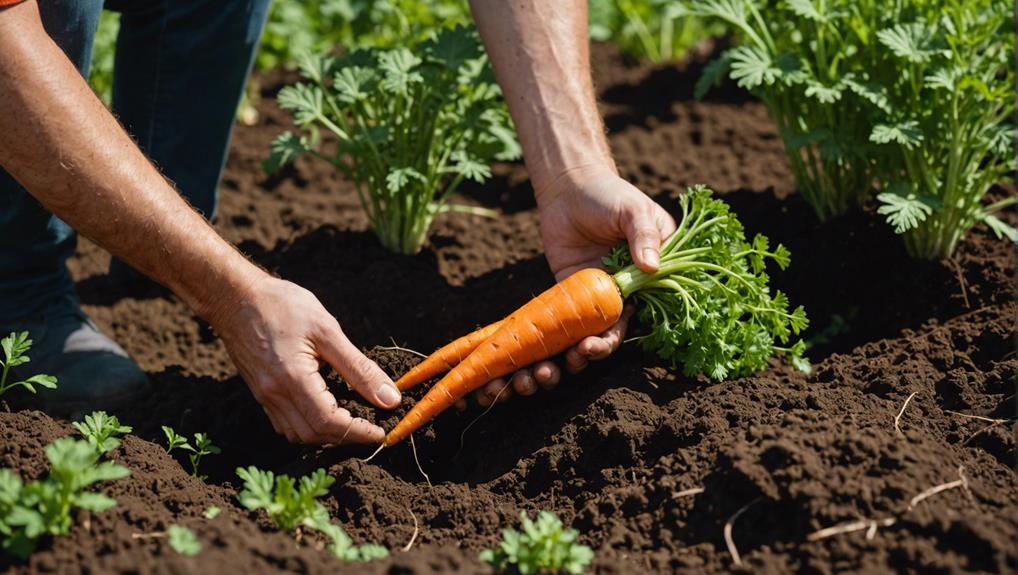
Carrots have a rich historical significance, originating in Central Asia and the Middle East thousands of years ago.
The evolution of carrot cultivation started with their leaves and seeds rather than the roots, with the vegetable we recognize today emerging in the 10th century in Persia.
This development eventually led to the global popularity of carrots, known for their nutritional value and distinctive orange hue.
Carrot's Historical Significance
Believed to have originated in Central Asia and the Middle East thousands of years ago, the modern orange carrot as it's understood today was developed by Dutch growers in the 17th century. Carrots hold significant historical importance, initially cultivated for their aromatic leaves and seeds before the root gained popularity.
The name 'carrot' finds its roots in the Greek word 'karoton' and the Indo-European root 'ker,' meaning horn or something long and tapering. Historically, carrots were highly valued for their medicinal properties, with ancient Greeks and Romans utilizing them for various health benefits.
The evolution of carrots from a primarily leafy plant to the widely consumed root vegetable showcases the enduring legacy and adaptability of this humble vegetable.
Evolution of Carrot Cultivation
The cultivation of what would later become the modern orange carrot began through selective breeding processes that transformed its original purple or white form. Originating in present-day Afghanistan, carrots were initially purple or white before evolving into the vibrant orange variety commonly known today.
Through centuries of cultivation, carrots were selectively bred for desirable traits such as sweetness, size, and color. This evolution of carrot cultivation led to the development of a vegetable prized not only for its taste but also for its nutritional benefits.
Carrots were highly valued in ancient times for their medicinal properties and were believed to promote good health and improve eyesight. The journey of carrots from their humble beginnings to their current status as a popular and versatile vegetable showcases the fascinating evolution of agricultural practices over time.
Carrot's Global Popularity
How did the global popularity of the modern orange carrot emerge from its humble origins in present-day Afghanistan and Iran? Carrots, rich in beta-carotene, fiber, and vitamins, have a long history dating back over 5,000 years. From their origins in Afghanistan and Iran, carrots evolved into the vibrant orange variety in the Netherlands during the 17th century. Today, China leads as the largest global producer of carrots, with other significant producers including Uzbekistan, Russia, and the United States. Carrots have become a staple in cuisines worldwide, featuring prominently in dishes like salads and stews. Their versatility and nutritional benefits have contributed to their widespread popularity across diverse cultures.
| Top Carrot Producers | Global Ranking |
|---|---|
| China | 1 |
| Uzbekistan | 2 |
| Russia | 3 |
| United States | 4 |
| Other countries | 5 |
Carrot's Spice Pairings
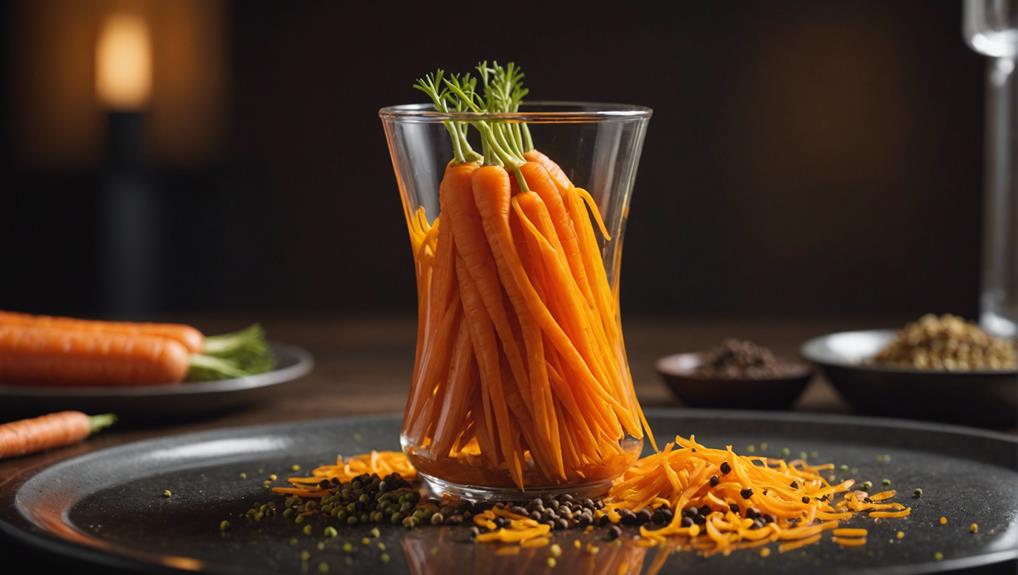
When selecting spices to pair with carrots for your sous vide spiced carrot salad, consider the complementary flavors of cumin, paprika, and Sichuan peppercorns. These spices can enhance the natural sweetness of carrots and create a depth of flavor that elevates your dish to a whole new level. Here's why these spice pairings work well with carrots:
- Cumin: Known for its warm, earthy flavor, cumin adds a slightly nutty and spicy taste that complements the sweetness of carrots without overpowering them.
- Paprika: Whether you choose sweet, smoked, or hot paprika, this spice can bring a rich, smoky undertone to your carrot salad, intensifying its overall complexity.
- Sichuan Peppercorns: Sichuan peppercorns provide a unique numbing and tingling sensation along with citrusy and floral notes, enhancing the flavor profile of the carrots in a Sichuan-style dish.
Experimenting with these spice combinations can help you discover the perfect balance of flavors for your sous vide spiced carrot salad.
Sous Vide Carrot Dishes
When considering Sous Vide Carrot Dishes, you may want to explore options like:
- Spicy Lime Glazed Carrots
- Savory Ras El Hanout Carrots
- Honey Glazed Carrots
These variations offer a range of flavors and seasoning profiles to suit different preferences. Experimenting with diverse combinations can elevate the humble carrot into a gourmet culinary experience.
Spicy Lime Glazed Carrots
The Spicy Lime Glazed Carrots sous vide dish guarantees that the carrots are perfectly tender while absorbing the bold flavors of the spicy lime glaze.
- The sous vide cooking method guarantees that the carrots are perfectly tender while absorbing the bold flavors of the spicy lime glaze.
- The combination of lime juice, honey, chili flakes, and garlic creates a harmonious balance of tangy, sweet, and spicy notes in this dish.
- Spicy Lime Glazed Carrots offer a vibrant and flavorful side dish option that brings a delightful pop of heat to your meal, making them a perfect accompaniment to a variety of main courses.
Savory Ras El Hanout Carrots
Seasoned with a blend of ras el hanout spices, these heirloom carrots undergo sous vide cooking to achieve a tender yet firm texture, complemented by the addition of golden raisins and toasted pine nuts for contrasting textures.
When preparing these savory ras el hanout carrots, follow these steps for a delicious outcome:
- Sous Vide Bath: Submerge the seasoned carrots in a sous vide bath set at the ideal temperature for best cooking results.
- Glazed Carrots: Finish the sous vide process by glazing the carrots with a mixture of honey and a touch of butter for a glossy finish.
- Ras El Hanout: The unique blend of ras el hanout spices adds depth and complexity to the dish, elevating the flavors of the heirloom carrots.
Honey Glazed Carrots
To achieve peak results when preparing Honey Glazed Carrots using sous vide, maintain precise control over temperature and timing throughout the cooking process. Here's how to make the most of your sous vide Honey Glazed Carrots:
- Temperature Control: Set your sous vide water bath to 183°F (84°C) for perfectly cooked carrots that are tender but not mushy.
- Timing: Allow the carrots to cook in the sous vide bath for 1 to 1.5 hours to guarantee they absorb the honey glaze flavors thoroughly.
- Sealing: Properly vacuum-seal the carrots with honey, butter, and seasonings to ensure they cook evenly and absorb all the delicious flavors.
Sous Vide Bag Sealing
When it comes to sous vide bag sealing, precision is key. Proper bag sealing techniques are essential for maintaining the integrity of your ingredients during the cooking process.
Ensuring an airtight seal is vital to achieve consistent and flavorful results in your sous vide dishes.
Sealing Sous Vide Bags
Properly sealing sous vide bags with a vacuum sealer is essential for upholding the integrity of ingredients during the cooking process.
When preparing ingredients for sous vide cooking, it's vital to guarantee a tight seal on the vacuum seal bag to prevent water from seeping in.
This seal is achieved by removing air from the bag, creating a secure environment for the ingredients to cook evenly and absorb flavors effectively.
Especially when dealing with liquids or marinades, take care to seal the bag properly to avoid any potential spillage that could compromise the cooking process.
Investing in high-quality vacuum sealer bags and mastering the art of sealing techniques will greatly contribute to the success of your sous vide recipes.
Bag Sealing Techniques
For effective sous vide bag sealing, ensuring a tight closure is imperative to maintain ingredient integrity and optimize cooking outcomes. When employing bag sealing techniques in sous vide cooking, utilizing a vacuum sealer is key for achieving a reliable seal.
Vacuum sealing bags effectively removes air, creating an airtight environment that prevents water infiltration and flavor loss. It also facilitates consistent heat distribution, ensuring thorough and precise cooking. Opt for high-quality vacuum sealer bags to prevent any leaks and guarantee a secure seal throughout the cooking process.
For added assurance, consider double-sealing the bags to enhance protection and minimize the risk of leaks during sous vide cooking. Mastering these bag sealing techniques will elevate your sous vide culinary creations to new heights.
Importance of Sealing
Guarantee a secure seal on sous vide bags to safeguard flavors, maintain a vacuum environment, and promote precise cooking outcomes.
Proper bag sealing is essential to prevent water from infiltrating and diluting the marinade or sauce, ensuring the flavors remain intact throughout the cooking process.
Maintaining a strong vacuum seal not only aids in consistent cooking but also prevents the bags from floating in the water bath, facilitating even heat distribution.
This seal acts as a protective barrier, safeguarding the food from contamination while aiding in moisture retention and ingredient tenderness.
Final Thoughts
In considering the overall appeal and reception of the Sous Vide Spiced Carrot Salad, it becomes evident that the unique combination of flavors and the precise sous vide cooking method contribute to a dish that's both intriguing and satisfying. The sous vide technique guarantees that the carrots are cooked at a constant temperature of 185°F for 1 hour, allowing them to retain their natural flavors while absorbing the essence of Sichuan peppercorns, soy sauce, rice vinegar, and sugar. This controlled cooking process results in carrots that are tender yet firm, with a flavor profile that's both nuanced and pronounced.
The flavor infusion achieved through sous vide cooking elevates the humble carrot to a new level, making it a rejuvenating and unexpected option for a side dish or salad. The final touches of sesame seeds, sesame oil, and cilantro not only add visual appeal but also complement the underlying flavors of the dish. The positive feedback and potential for customization indicate that this Sous Vide Spiced Carrot Salad isn't only a current delight but also a canvas for future culinary experiments.
Frequently Asked Questions
Can You Overcook Sous Vide Carrots?
You can overcook sous vide carrots if you neglect time management. For ideal texture, respect your preferences and monitor closely. Experiment with culinary creativity, but remember: vegetables deserve care to avoid loss of flavor and quality.
At What Temperature Do You Sous Vide Vegetables?
For peak results, you should sous vide vegetables like carrots at precise temperatures between 183-185°F. This method guarantees the ideal texture based on your preferences and allows for flavor infusion while maintaining the vegetables' natural goodness.
How Do You Get the Most Flavor Out of Carrots?
To get the most flavor out of carrots, experiment with roasting vs steaming for varying depths of taste. Explore flavor pairing with herbs, spices, and acids that complement carrots. Adjust cooking methods to match texture preferences, creating a personalized culinary experience.
What Temperature Do Carrots Soften?
To achieve ideal softness in carrots, sous vide techniques provide precise control over carrot texture. Carrots soften best between 183°F and 185°F. Maintaining this temperature for about an hour guarantees tender yet firm carrots while preserving their natural sweetness and nutrients.
Conclusion
To sum up, utilizing sous vide cooking techniques for spiced carrot salads offers a precise and consistent method for achieving peak flavor and texture.
By sealing the carrots in a vacuum bag and cooking them at a controlled temperature, the spices are able to infuse thoroughly, resulting in a dish that's bursting with flavor.
Incorporating this method into your culinary repertoire will definitely elevate your carrot salad game to new heights.
